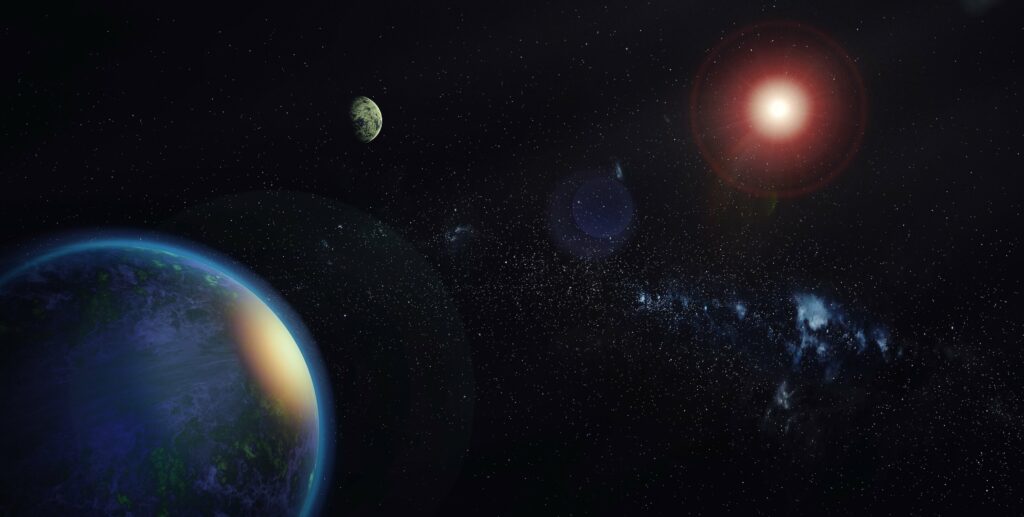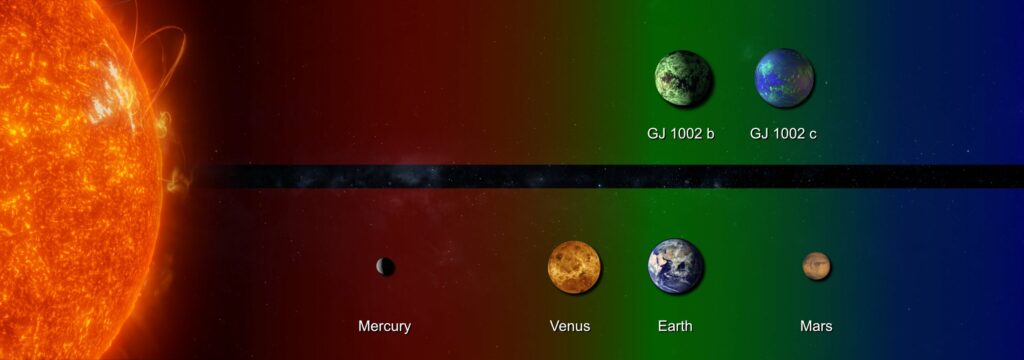An international group of scientists has announced the discovery of two previously unknown exoplanets. Their orbits are located in the habitable zone of the red dwarf GJ 1002, which is one of the fifty closest star systems to Earth.

The red dwarf GJ 1002 is located at a distance of 16 light-years from Earth in the direction of the constellation Cetus. Its radius is seven times, and its mass is nine times less than the solar one. The surface temperature of the star is 2700 °C, it is 700 times dimmer than our luminary.
The researchers conducted a series of observations of GJ 1002 using ESPRESSO spectrographs (it is mounted on the ESO’s Very Large Telescope) and CARMENES (mounted on the 3.5-meter telescope of the Calar Alto Observatory). During the subsequent analysis of the data, they could detect deviations in the radial velocity of the red dwarf. They are caused by the influence of gravity of two bodies orbiting it, which mass is comparable to the mass of the Earth.

The first of the two newly discovered exoplanets makes one orbit its luminary in 10 days, the second in 21 days. Their orbits are located in the habitable zones of the system. This is the name of a conditional region where, if there are suitable conditions, liquid water can exist on the surface of an exoplanet.
Unfortunately, none of these exoplanets are transiting, which at the moment does not allow us to determine their diameters, as well as to find out if they have an atmosphere. But researchers have very high hopes for the ESO’s Extremely Large Telescope, which is currently being built in Chile. Due to the proximity of GJ 1002 to Earth, the capabilities of the new observatory should be sufficient to conduct a spectrographic analysis of exoplanets and determine the composition of their gas shells (of course, if any).
Earlier we talked about how astronomers discovered two water worlds in the system of another red dwarf.
According to https://phys.org
Follow us on Twitter to get the most interesting space news in time
https://twitter.com/ust_magazine

